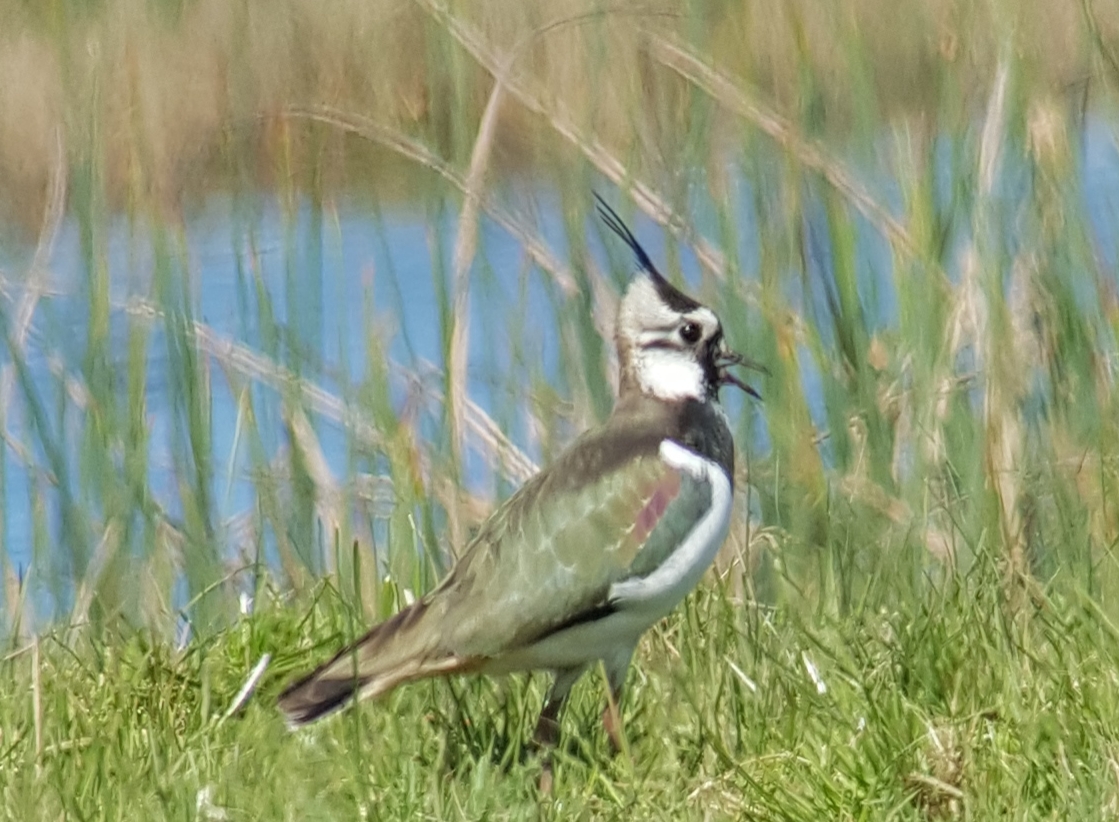News
NPWS Cooldross Breeding Lapwing Protection Project 2021
Date Released: Friday, May 21, 2021

Did you know that the Lapwing is Ireland’s national bird? Sadly, the ground nesting wading bird are rapidly declining as breeding species in Ireland.
It is estimated that only 550-600 breeding pairs remain in the country – a decline of 56% in the last number of years. Lapwing is on the red list of Birds of Conservation Concern in Ireland.
Conservation efforts to protect and conserve breeding Lapwing and other waders on National Parks & Wildlife Service land at Cooldross Lagoon and Saltmeadow, Kilcoole Co. Wicklow are showing good results so far in 2021.
Following on from works last year, the addition of a predator exclusion fence along the perimeter of the land this year, along with habitat management measures, has resulted in a dramatic jump in Lapwing breeding numbers from 4 nests in 2020 to 19 nests, so far, this year 2021. The predator exclusion fence was constructed by local contractor Tom Pierce with finance given by our Department’s stimulus package, allocated by Minister of State for Heritage Malcolm Noonan.
Beneficial management for breeding Lapwing at the site includes: the creation of wader scrapes for chick feeding, targeted grazing to create a short grass sward to nest in and feed (cattle are taken out whilst chicks are about) and water management to maintain shallow pools for feeding. The site is also managed for other breeding waders, wintering wildfowl and waders and passing migrants.
Monitoring and ringing of breeding lapwing is also an important facet of management. This involves monitoring breeding outcomes and productivity, ringing and collection of biometric data. This year will see the start of a colour ringing project that will hopefully generate data on fledgling survival rates, dispersal and natal site fidelity.
Lapwing, like many ground nesting waders in Ireland, have dramatically declined due to factors including habitat loss and fragmentation. Predation, in particular, is a main driver of decline. The provision of a predator exclusion fence along with other management measures seems to have positively affected breeding success and outcomes for the Lapwing at Cooldross as evidenced by a large increase in numbers.
Whilst it is still very early in the nesting year there are, at the moment, approximately 30 chicks feeding in the shallow pools, scrapes and short grass at Cooldross and there are a large number of nests which have yet to hatch. So, all going well, there should be close to 50 fledglings produced this year- up from 10 fledglings last year. Other wader species nesting include oystercatcher and ringed plover - both showing increase in numbers this year also.
An important aim of management works is to try and encourage Redshank to breed at the site. This threatened wader species has become locally extinct from the general area a good number of years ago. So far this year there has been some signs of initial breeding behaviour from this wader species of conservation concern.
There are also 2 pairs of the rare Little terns present. One of these pairs has shown signs of nesting on a specially constructed experimental beach at Cooldross. This is part of a Little tern climate proofing investigation. The main colony for this species is located a short distance away on Kilcoole beach.
The NPWS conservation team for this brilliant project are: Jason Monaghan, Damian Clarke District Conservation Officer Declan Ward, Anne-Marie Shaughnessy and Wesley Atkinson Regional Manager. Special thanks to Alan Lauder of ALC Consulting for assistance and advice with the project, Sean Kelly Birds Unit NPWS, and John Webb, farmer for the grazing regime. All Photos and Videos taken under NPWS license.
